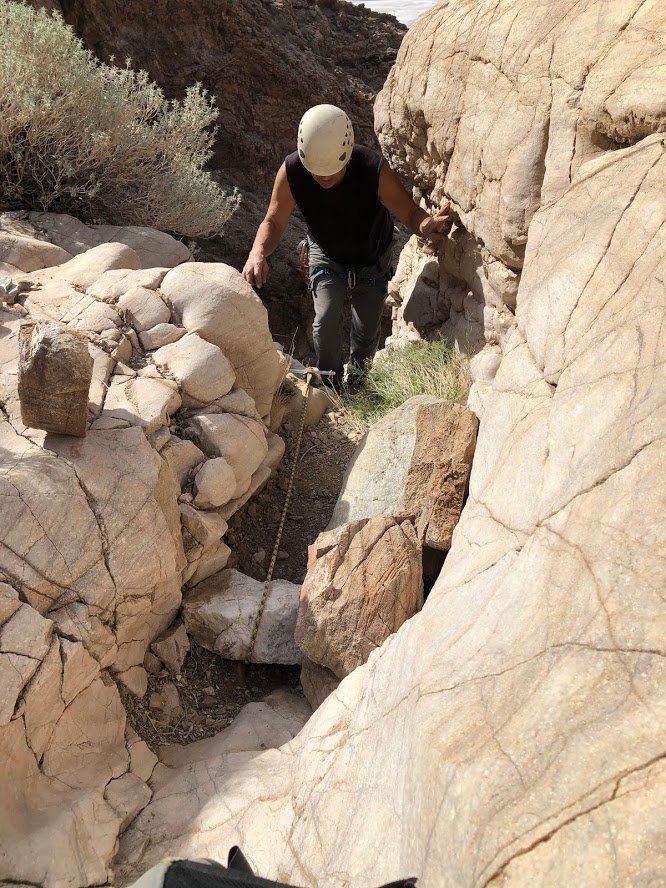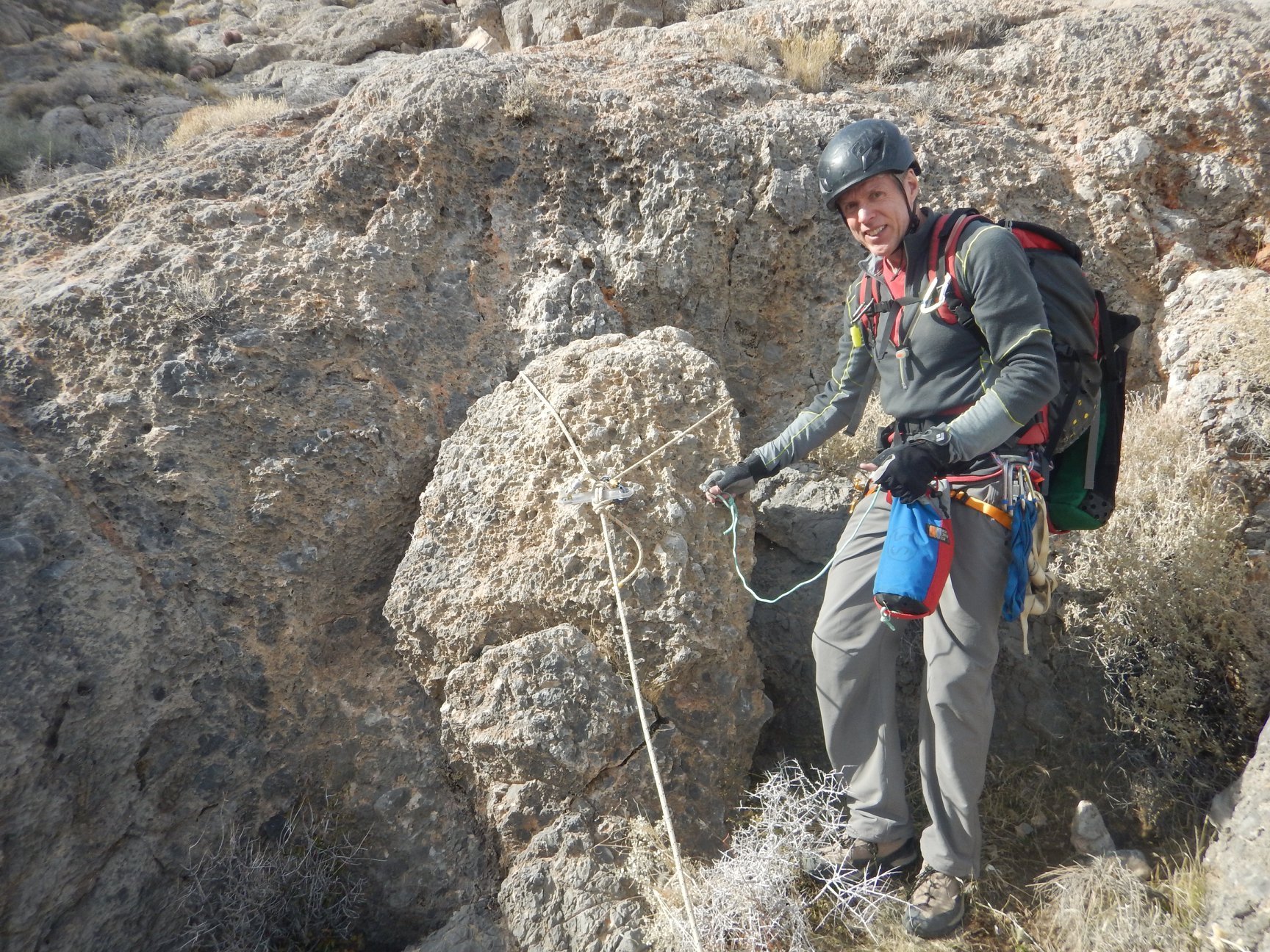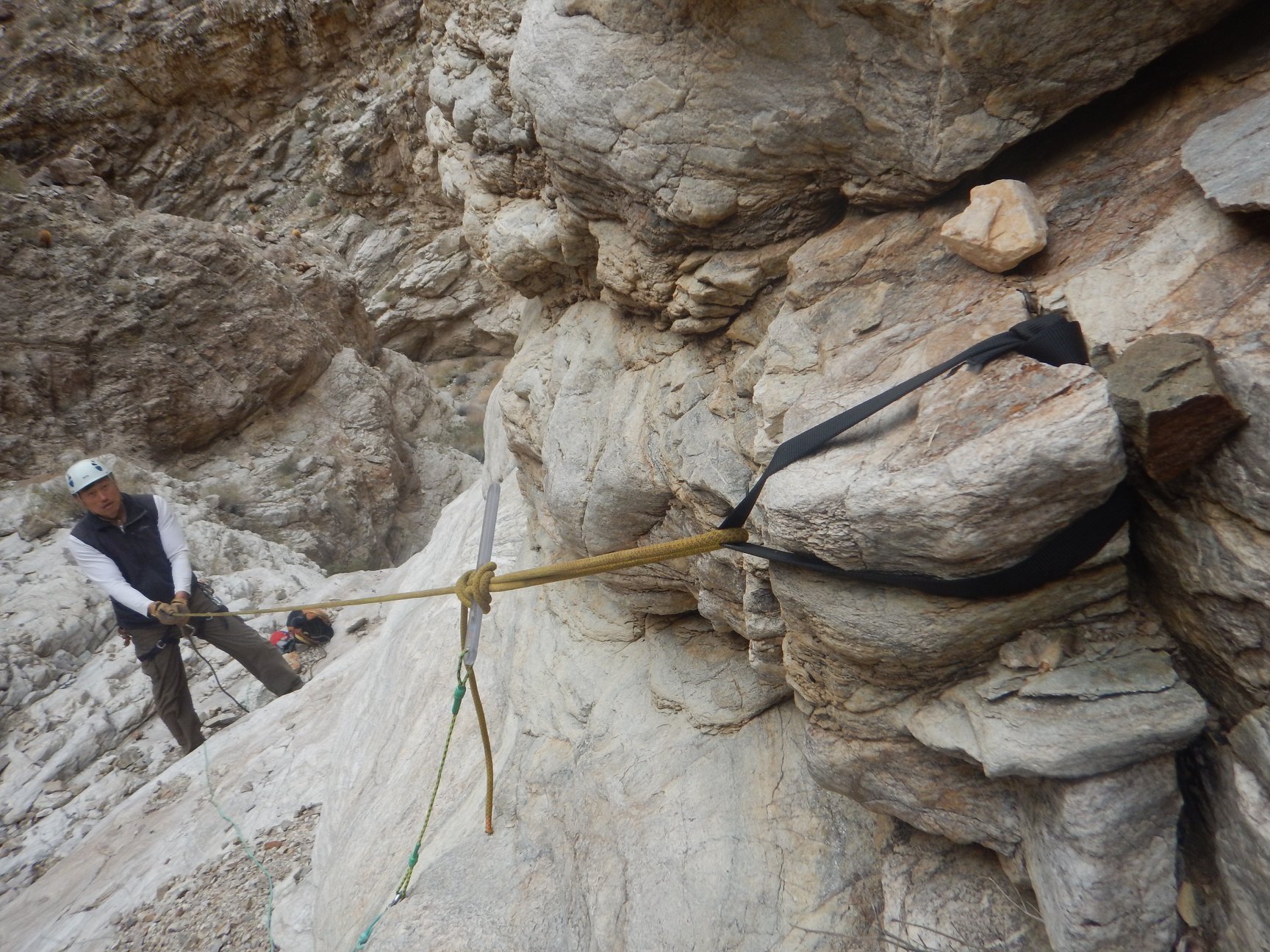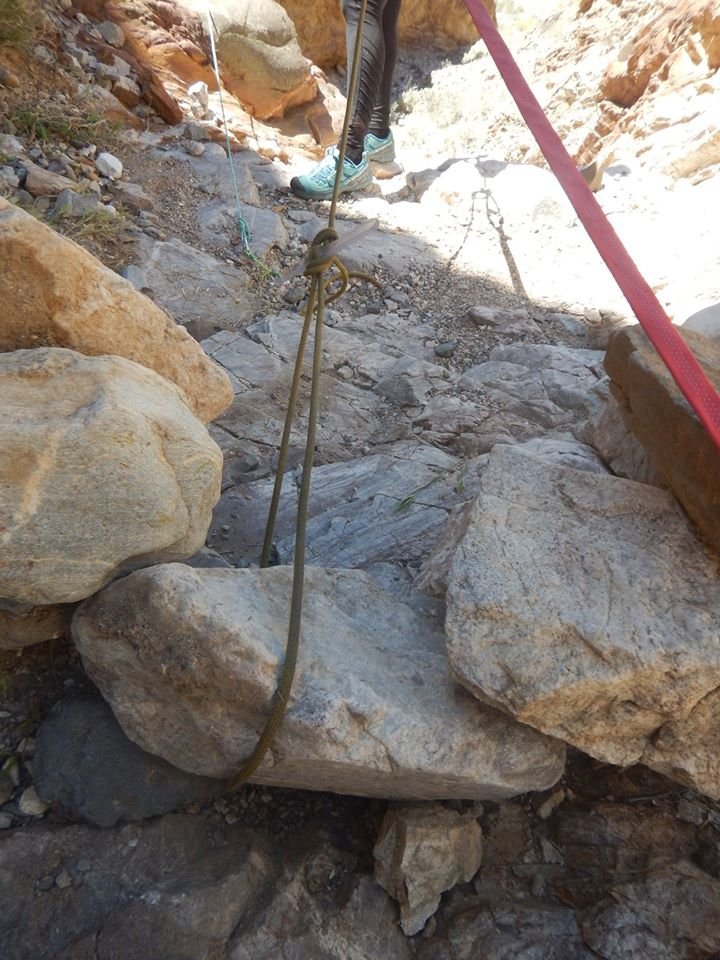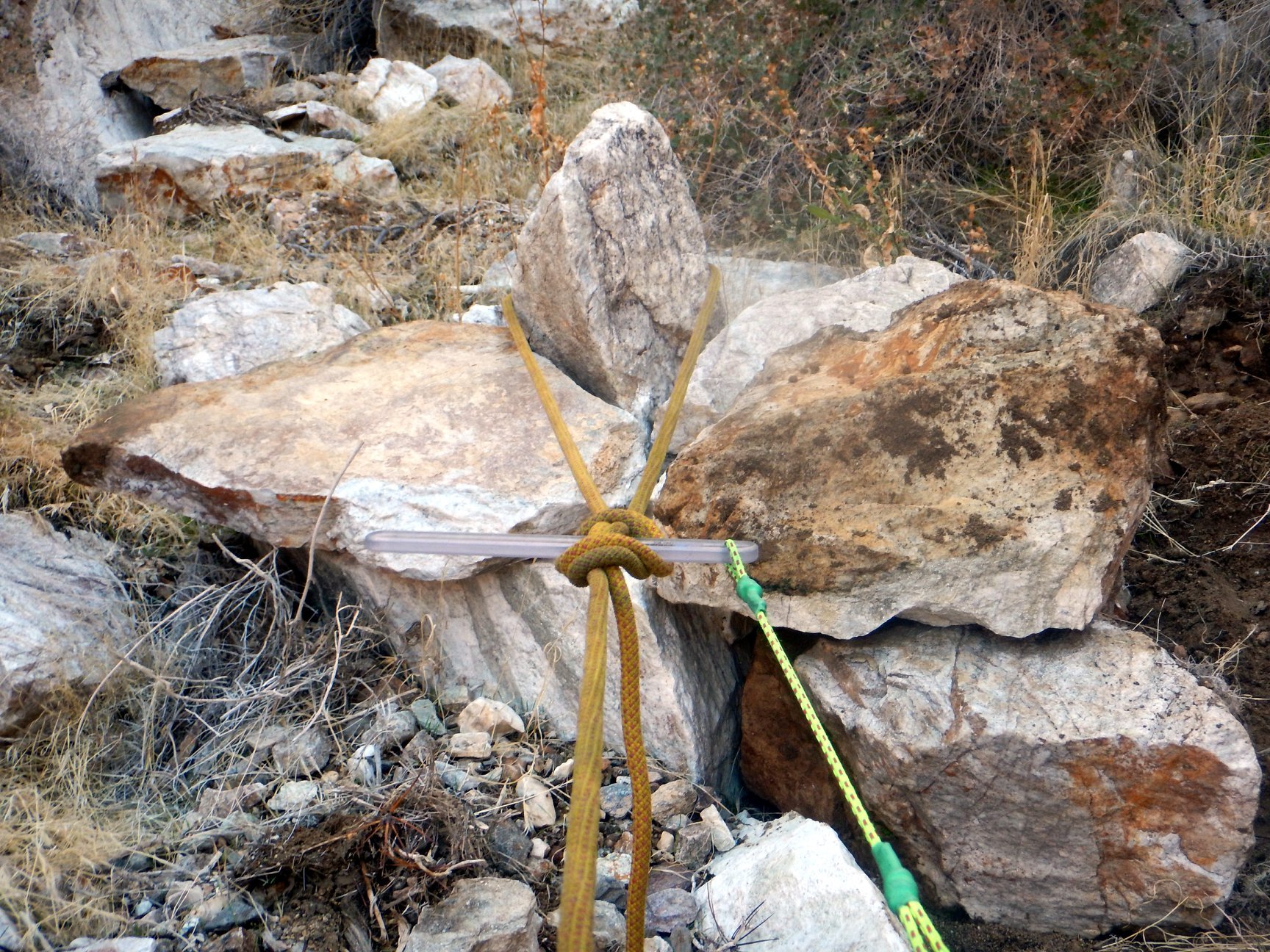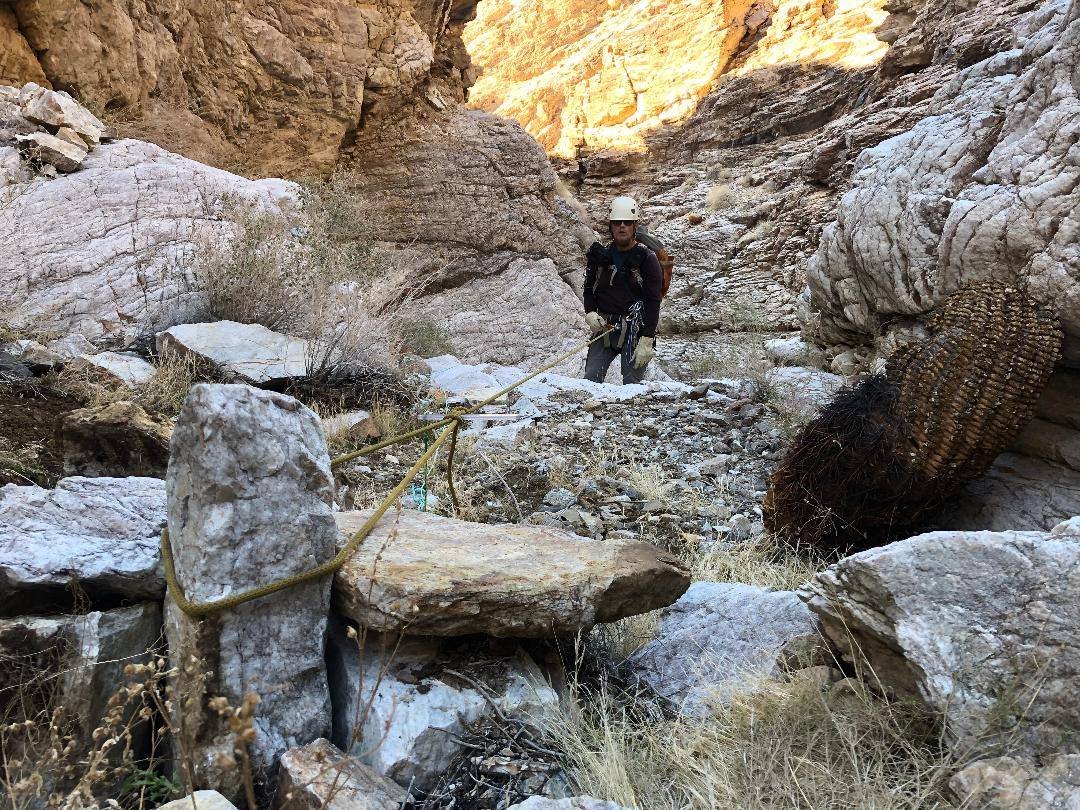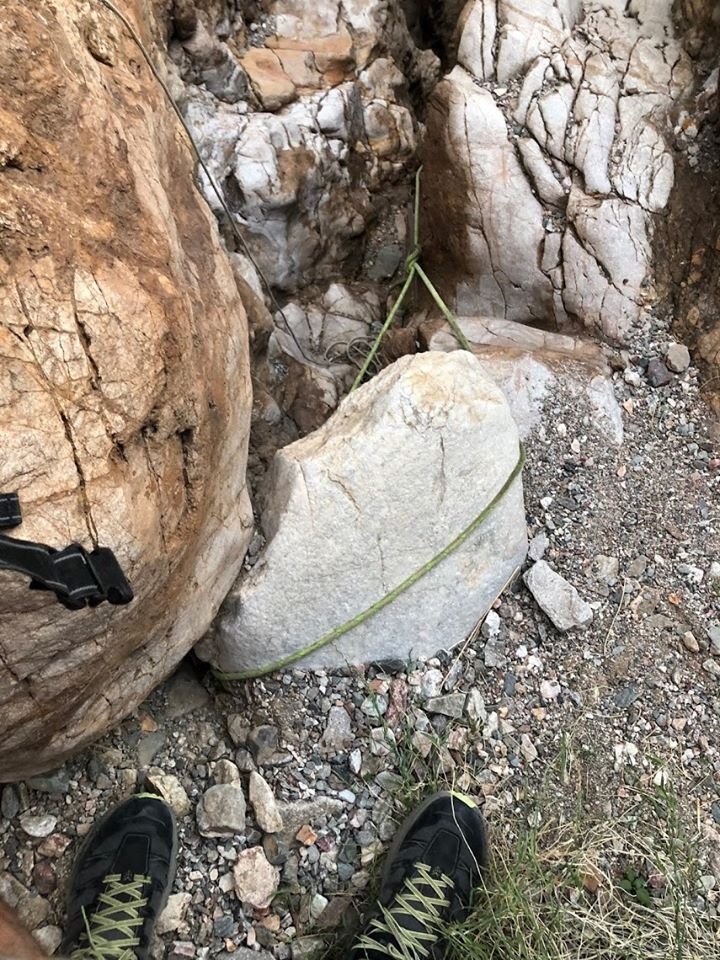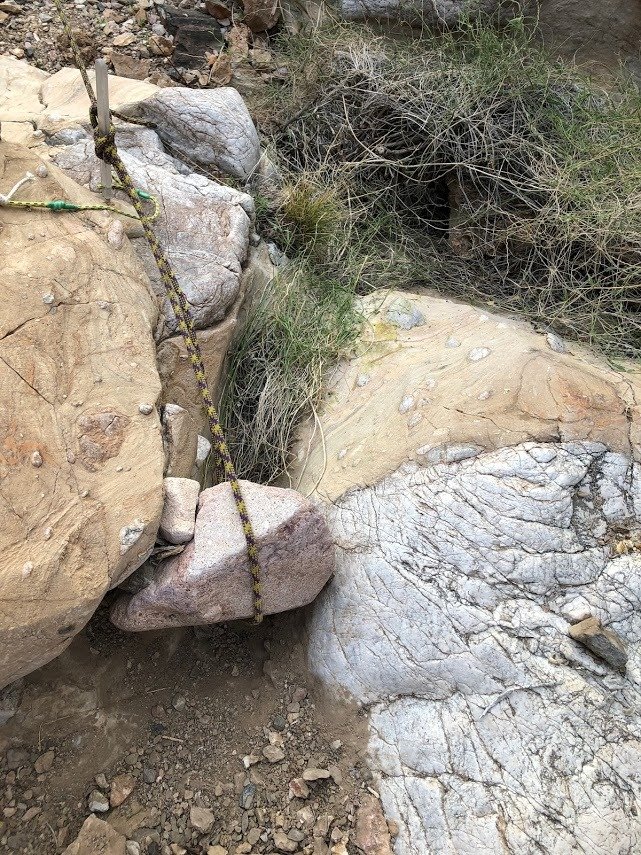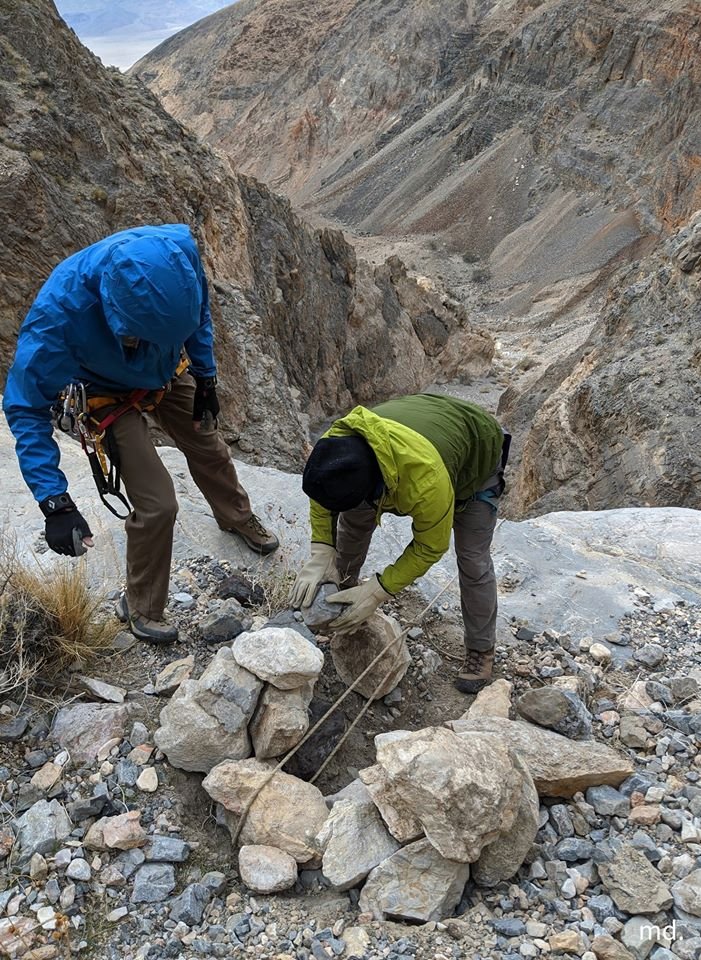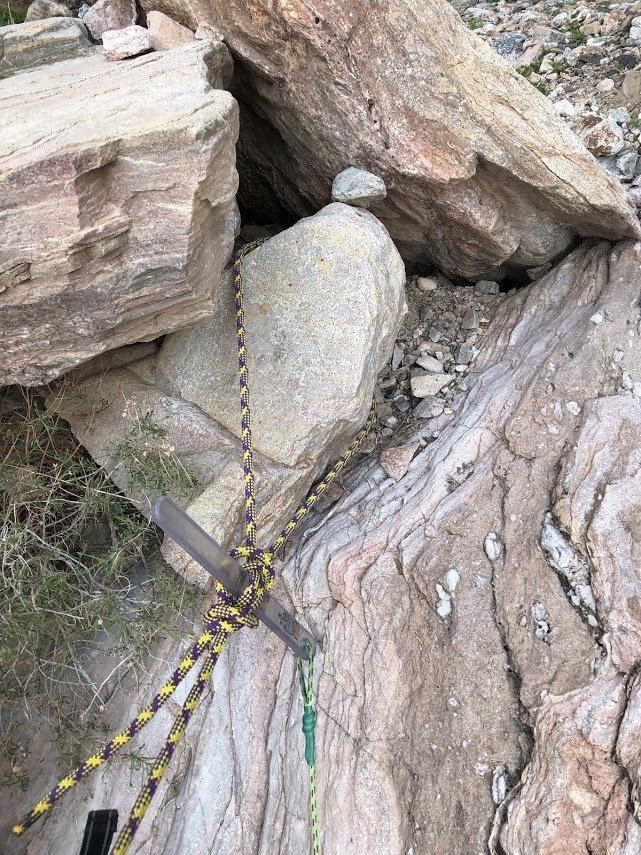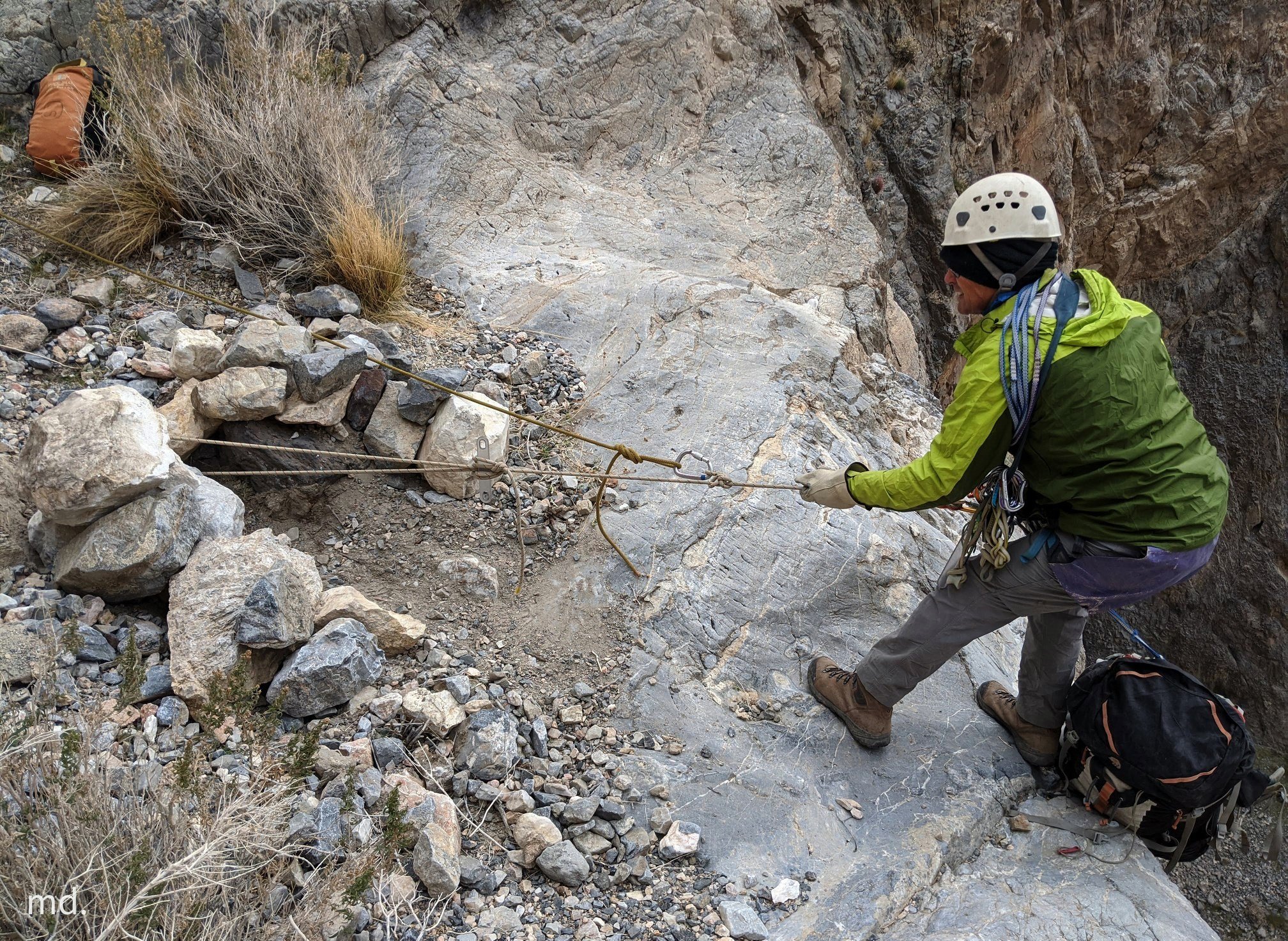Ghosting using Cairn Anchors with Scott Swaney
Death Valley canyons are especially amenable to building better cairn anchors as there is an ample supply of large heavy solid rocks near the top of many rappels.
Level One: Cairn/Deadman Anchors. At the basic level, a rock is securely tied off with black 1” tubular webbing and other rocks are piled atop. Sometimes dug into the dirt a bit to improve the ‘geometry’. Advantage: straightforward to build. Disadvantage: Hard to inspect. Which means people don’t. Hard to replace the webbing, which means people don’t. The webbing in DV gets a lot of UV and deteriorates on a regular basis, and must be replaced on a regular basis. Conventional Cairn anchors (ie, Level One) are not best practice.
Level Two: Inspectable Cairn Anchor: A Cairn is built such that the ‘base rock’ is fully accessible, and the webbing is easily inspected and/or replaced. Advantage: webbing can be easily inspected or replaced. Disadvantage: these take more skill to build, and are human-built looking. Those uninitiated into Level Two anchors may be confused by them.
Level Three: Fiddleable Cairn Anchor: A Cairn is built much like Level Two, but without using webbing. The cairn is built so that a Fiddle-Stick device can be used on it to obviate the need for webbing. Advantage: no tat is left behind. Disadvantage: these take more skill to build than Level Two, and are a bit more human-looking. Those uninitiated in Level Two and/or Level Three anchors may be confused by them. People who are not in the FiddleStick Cult will not know how to Fiddle them, and may or may not figure out they can easily add webbing without disturbing the anchor.
——————————————————-
Guest Rave by Scott Swaney: Ghosting using Rock-Pile (Cairn) Anchors
This album is for canyoneers who may be interested in putting in canyon anchors, and leaving nothing behind in canyon places, and anywhere else there are canyons around the world. Leaving no webbing or rappel rings.
Many places you can put in bolts, pitons, climbing nuts, etc, but in some parks like Death Valley, you are required to only use natural material found in the canyons. Nearly all cairn anchors have webbing wrapped around a rock, and then additional rocks are added for additional weight for strength. Many other natural anchors can be done like making Rock-Chocks or Knot-blocks, but they have to using webbing to leave & usually a rap ring. It is not hard to build cairn anchors that leave nothing behind.
Using Retrievable tools like a Fiddlestick, you can drop the rope down without using webbing. But the cairn has to be constructed a certain way where the rope can easily be pulled around a smooth "pull-rock", and not hang up on. And leaving just the rocks you found there as the only thing left behind. These techniques allows you to get down a canyon and cost nothing in man-made materials. I have spent a lot of money building many hundreds of Cairn Anchors and having to carry rolls of webbing and rappel rings. And also not leaving behind webbing that will turn to trash in a year or so out there in the desert heat & sun.
Also being shown are Fiddlesticks used on boulders and rock horn found there. And many other options to use, such as trees and strong live bushes.
All these points will also leave the canyon in a much more pristine state for others going through in the future - with no litter/trash when the webbing deteriorates and has to be replaced.
NOTE: Also being shown here is an additional rope temporarily used as a back-up anchor to be taken off for the last person. Usually tied to an alpine butterfly on the rappel line.
This one is rather “over-built” !







